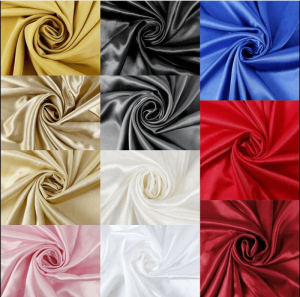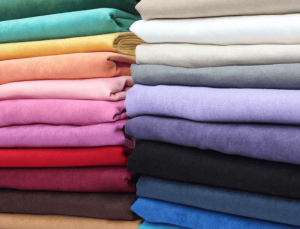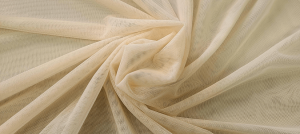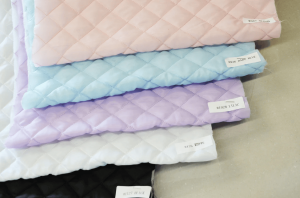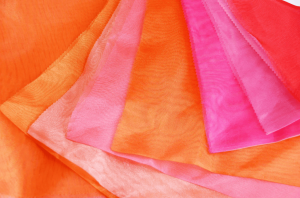Eco-Friendly Fabrics: The Future of the American Textile Market
In recent years, sustainable textiles have transitioned from niche offerings to mainstream materials used across apparel, interiors, & industrial applications.
LOS ANGELES, CA, UNITED STATES, October 22, 2025 /EINPresswire.com/ -- My Textile Fabric, a Los Angeles–based fabric vendor and distributor, is observing a marked transformation in the American textile market as sustainability becomes a central factor in material production and procurement. The growing emphasis on eco-friendly fabrics reflects a shift in both consumer behavior and industry standards, driven by environmental responsibility and technological progress in textile manufacturing.In recent years, sustainable textiles have transitioned from niche offerings to mainstream materials used across apparel, interiors, and industrial applications. This evolution is redefining supply chains, design choices, and production practices, signaling a long-term move toward responsible material sourcing and reduced environmental impact.
Sustainability as a Core Industry Standard
The American textile market has historically been shaped by innovation and adaptability. Today, those same qualities are being applied to sustainability. Eco-friendly fabrics are increasingly being developed from organic, recycled, and biodegradable sources that minimize waste and energy use during production. Materials such as organic cotton, bamboo viscose, linen, and fabrics made from post-consumer recycled fibers are leading this change.
For textile distributors and manufacturers alike, sustainability is no longer an optional feature but a key standard in competitive operations. Supply chain transparency and certifications verifying ethical and eco-conscious practices are becoming as important as product quality and design. The movement toward sustainability aligns with broader global efforts to address climate concerns, resource depletion, and pollution associated with textile production.
Technological Advancements in Fabric Production
Advancements in textile engineering have accelerated the development of environmentally friendly materials. Modern production technologies allow for the creation of fabrics that combine durability with ecological efficiency. Waterless dyeing techniques, low-impact chemical processing, and closed-loop production systems are reducing the environmental footprint of textile manufacturing.
In addition, the use of digital tools and automation supports better material management by minimizing waste in cutting, dyeing, and finishing processes. Innovations in textile recycling now enable fibers from post-industrial and post-consumer waste to be reprocessed into new fabrics without compromising quality. These developments illustrate the growing intersection of sustainability and innovation within the textile industry.
Market Drivers and Consumer Influence
Consumer expectations are a major force behind the rise of sustainable textiles in the American market. Growing environmental awareness has led individuals and businesses to seek materials that align with ethical and ecological principles. This shift is evident in sectors such as fashion, interior design, and hospitality, where sustainability influences purchasing decisions and brand reputations.
Retailers and manufacturers are responding by incorporating eco-friendly materials into their product lines and supply strategies. Many businesses now recognize that environmental responsibility enhances not only corporate credibility but also long-term resilience. As sustainable materials become more widely available, cost differentials compared to conventional fabrics continue to narrow, making them a practical option for a broader range of buyers.
Challenges in the Transition to Sustainability
Despite significant progress, the shift toward eco-friendly fabrics presents ongoing challenges. Sustainable material production often involves higher initial costs, complex certification processes, and the need for specialized knowledge in material sourcing and performance evaluation. Supply consistency can also be affected by the variability of natural fibers and limited production capacity for certain sustainable materials.
Moreover, defining “sustainability” remains complex. Standards vary widely across certification programs, and not all eco-friendly claims are equally substantiated. Transparency and traceability throughout the supply chain are therefore essential to maintaining industry credibility. The continued development of unified guidelines and independent verification systems will be critical to ensuring accountability as the market grows.
The Role of Distributors in the Sustainable Supply Chain
Textile distributors serve a vital function in supporting the transition toward sustainability. By sourcing materials responsibly and providing clients with access to certified eco-friendly fabrics, distributors act as intermediaries between manufacturers and end users seeking verified sustainable options.
Enhanced logistics, efficient inventory systems, and informed material consultation help ensure that environmentally conscious products are available to meet the growing demand. In regions such as Los Angeles, where the creative industries depend on access to diverse textiles, local distributors contribute to sustainability by reducing transportation distances, minimizing packaging waste, and facilitating efficient order fulfillment.
This approach reinforces the broader environmental objectives of the textile supply chain, linking global sourcing efforts with local implementation.
Economic and Environmental Implications
The shift toward sustainable fabrics carries both economic and environmental implications for the American textile market. Environmentally friendly production reduces reliance on nonrenewable resources, limits chemical pollution, and decreases overall energy and water consumption. These changes align with national efforts to promote green manufacturing and resource efficiency.
From an economic perspective, sustainable textiles are fostering new market opportunities. Manufacturers investing in eco-friendly production gain access to growing sectors focused on ethical fashion, responsible interiors, and environmentally regulated industries.
Distributors and retailers that adapt early to sustainability trends position themselves to meet future compliance standards while catering to environmentally aware consumers.
As sustainability continues to integrate into mainstream textile practices, its role in shaping long-term competitiveness across the U.S. market becomes increasingly apparent.
Sustainability Beyond Fabric Composition
Sustainability in textiles extends beyond the fibers themselves. It encompasses the full product lifecycle, from raw material extraction to end-of-life management. Circular design strategies, in which products are designed for reuse, recycling, or biodegradation, are gaining traction across the textile industry.
Efforts to reduce packaging waste, utilize renewable energy sources, and develop take-back or recycling programs reflect a more comprehensive understanding of sustainability. This systemic approach encourages collaboration between manufacturers, distributors, and consumers to ensure materials remain in use for as long as possible before being responsibly repurposed or decomposed.
Such integrated efforts demonstrate how the textile sector is moving toward a model that values long-term environmental stewardship alongside economic viability.
A Forward Outlook for the American Textile Market
The growing prevalence of eco-friendly fabrics indicates that the American textile industry is undergoing a fundamental transformation. Sustainable materials are becoming integral to the supply chain rather than existing as niche alternatives.
As manufacturers continue to innovate and distributors strengthen sustainable sourcing, the market will likely see further advances in both performance and environmental efficiency. This shift not only supports national sustainability goals but also reinforces the resilience and adaptability of the textile sector.
The next stage of development will depend on collaboration among all stakeholders, from producers and suppliers to designers and end users, to promote transparency, education, and responsible consumption. By aligning environmental priorities with market growth, the U.S. textile industry can continue to evolve toward a future defined by both quality and conscience.
About My Textile Fabric
My Textile Fabric is a Los Angeles–based vendor and distributor specializing in a wide range of fabrics sourced from international markets. Serving industries including apparel, event design, and upholstery, the company connects global textile production with regional needs through responsible sourcing and efficient distribution. Committed to material diversity and sustainable practices, it supports both large-scale enterprises and independent professionals seeking reliable fabric solutions.
For media inquiries, please contact:
My Textile Fabric
https://mytextilefabric.com/
INFO@MYTEXTILEFABRIC.COM
Free 800-939-9266
Local 213-468-8388
Omid Yasharpour
My Textile Fabric
+1 800-939-9266
info@mytextilefabric.com
Visit us on social media:
LinkedIn
YouTube
Other
Legal Disclaimer:
EIN Presswire provides this news content "as is" without warranty of any kind. We do not accept any responsibility or liability for the accuracy, content, images, videos, licenses, completeness, legality, or reliability of the information contained in this article. If you have any complaints or copyright issues related to this article, kindly contact the author above.

